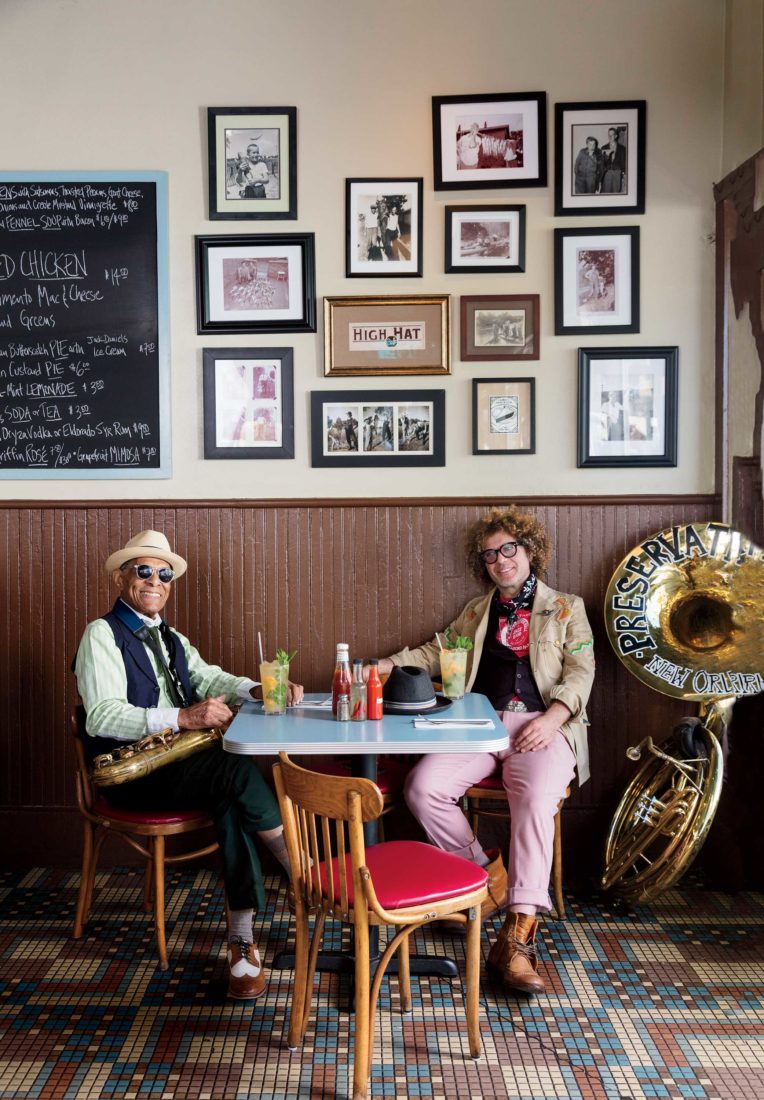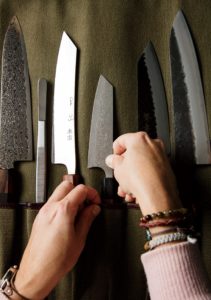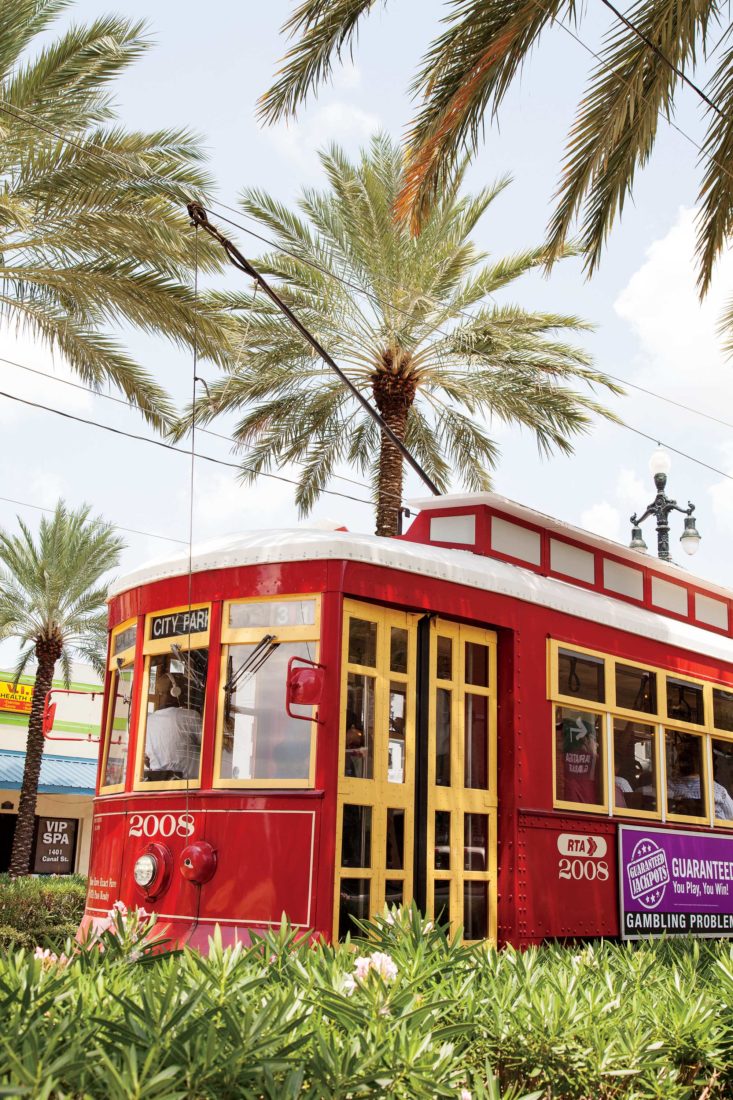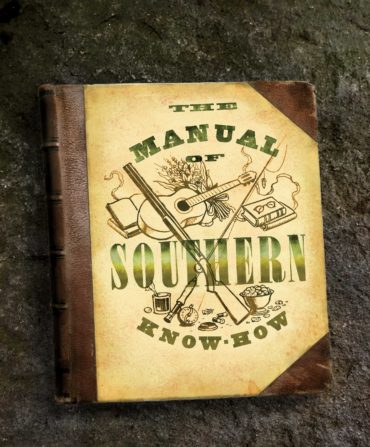Oretha Castle Haley. Freret. Oak. Remember those street names. Cling to them like the heirlooms they are. No matter how much the corporate hotel chains and the corporate restaurants try to herd you with the rest of the cattle to the usual New Orleans places, resist.
For several generations, marketers and developers have sought to remake the city into a pale, generic version of Anywhere, America. They demolished much of our traditional architecture, ripped out our streetcar lines, and replaced many of our neighborhood streets with elevated expressways. But in recent years, the old New Orleans has come roaring back with a fury, declaring herself a multicentered city of rich, idiosyncratic neighborhoods with their main streets—once centers of commerce—finally enjoying a resurgence.

Photo: Cedric Angeles
When they’re not rousing French Quarter crowds, Preservation Hall Jazz Band members Charlie Gabriel (left) and Ben Jaffe relax at spots like High Hat Cafe.
Richard Campanella, the Tulane University professor who has made a career of studying the city’s neighborhoods, points to the Dryades Market, which opened in 1849 and soon started attracting Eastern European Orthodox Jewish merchants. A hundred years later, it had become a major shopping area for black New Orleanians and the site of civil rights protests against its discriminatory hiring practices. Oretha Castle Haley, after whom the street that passes by the market has been renamed, participated in the protests and later became a civil rights leader.

Photo: Cedric Angeles
The patio at Casa Borrega.
Taken collectively, the street’s current offerings exemplify the story of New Orleans (including, fittingly, a series of nonprofits). The Dryades Public Market is now a food hub featuring local wares such as French Truck Coffee. The Southern Food and Beverage Museum features Crescent City–centric collections such as Raymond Bordelon’s gallery of absinthe paraphernalia. Casa Borrega, with its Mexican food and pan-Latin live music, reasserts the long connection between New Orleans and points southwest. James Beard Award nominee Isaac Toups offers his personal approach to regional cuisine at Toups South, while Café Reconcile uses its white beans with shrimp, po’boys, and bananas Foster bread pudding as a means of teaching at-risk youth the skills they need to secure employment in the restaurant industry.

Photo: Cedric Angeles
The Stryker cocktail at Cure.
Heading toward Uptown: Freret Street had become an important commercial corridor by the 1920s. After decades of decline, the avenue has bounced back to life as a destination for eating and drinking. Cure helped spearhead the comeback of creative cocktail culture in New Orleans. High Hat Cafe, with its pimento cheese and hot tamales, brings Mississippi Delta notes to a menu that also includes Gumbo Ya-Ya. There are good New Orleanian exponents of national food trends, including regional Italian cuisine (Ancora Pizzeria and Salumeria), hamburgers (the Company Burger), and hot dogs (Dat Dog). For live music on Freret, the choice is Gasa Gasa.

Photo: Cedric Angeles
Fine blades at Coutelier Nola.
Oak Street didn’t become a part of New Orleans proper until the city annexed the town of Carrollton in 1874. Some of the old businesses held on while the street declined in the 1980s and ’90s, most notably Haase’s children’s clothing store. But even in Oak’s heyday, you couldn’t have imagined walking into a place like Coutelier Nola, a fine Japanese knife store opened by the chefs Jacqueline Blanchard and Brandt Cox. Simone’s Market, a gourmet food store and café, also reflects the street’s emerging sensibility with its rosemary roast beef and smoked fried chicken sandwiches, while Z’otz Café pours coffee with a bohemian touch.
But if you really want to see a New Orleans that is both totally typical and absolutely singular, go on down to Cowbell at the end of Oak Street for hamburgers, homemade apple pie, and crab boil potatoes—I would guess even most New Orleanians haven’t ventured that far.








